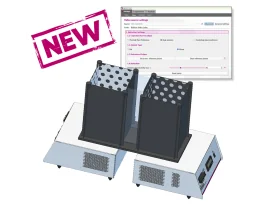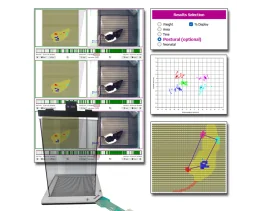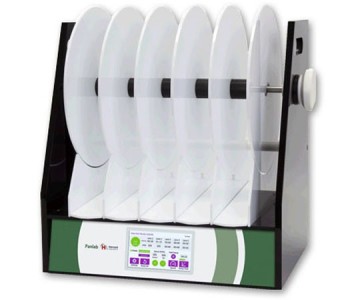Authors
H Koivisto, E Ytebrouck, S Carmans, R Naderi et al
Lab
A. I. Virtanen Institute, University of Eastern Finland, P.O. Box 1627, 70211, Kuopio, Finland.
Journal
Behavioural Brain Research
Abstract
This study assessed the development of motor deficits in female hTau.P301S transgenic mice from 1.5 to 5.5 months of age. The test battery included clasping reflex, grid hanging, Rotarod test, spontaneous explorative activity, Catwalk gait analysis, and nest building. Starting from the age of 2Ð3 months the mice showed marked hyperactivity, abnormal placing of weight on the hindlimbs and defective nest building in their home cage. These behavioral impairments did not progress with age. In addition, there was a progressive development of hindlimb clasping, inability to stay on a rotating rod or hang on a metal grid, and gait impairment. Depending on the measured output parameter, the motor impairment became significant from 3 to 4 months onwards and rapidly worsened until the age of 5.5 months with little inter-individual variation. The progressive motor impairment was paralleled by a robust increase in AT8 p-tau positive neurons in deep cerebellar nuclei and pontine brainstem between 3 and 5.5 months of age. The quick and steadily progressive motor impairment between 3 and 5.5 months of age accompanied by robust development of tau pathology in the hindbrain makes this mouse well suited for preclinical studies aiming at slowing down tau pathology associated with primary or secondary tauopathies.
BIOSEB Instruments Used
Aron Test or Four Plates Test (LE830),Rotarod (BX-ROD)
Source :
https://www.sciencedirect.com/science/article/pii/S0166432819305376#!

 Douleur - Allodynie/Hyperalgésie Thermique
Douleur - Allodynie/Hyperalgésie Thermique Douleur - Spontanée - Déficit de Posture
Douleur - Spontanée - Déficit de Posture Douleur - Allodynie/Hyperalgésie Mécanique
Douleur - Allodynie/Hyperalgésie Mécanique Apprentissage/Mémoire - Attention - Addiction
Apprentissage/Mémoire - Attention - Addiction Physiologie & Recherche Respiratoire
Physiologie & Recherche Respiratoire




































 Douleur
Douleur Système Nerveux Central (SNC)
Système Nerveux Central (SNC)  Neurodégénérescence
Neurodégénérescence Système sensoriel
Système sensoriel Système moteur
Système moteur Troubles de l'humeur
Troubles de l'humeur Autres pathologies
Autres pathologies Système musculaire
Système musculaire Articulations
Articulations Métabolisme
Métabolisme Thématiques transversales
Thématiques transversales Congrès & Meetings
Congrès & Meetings 